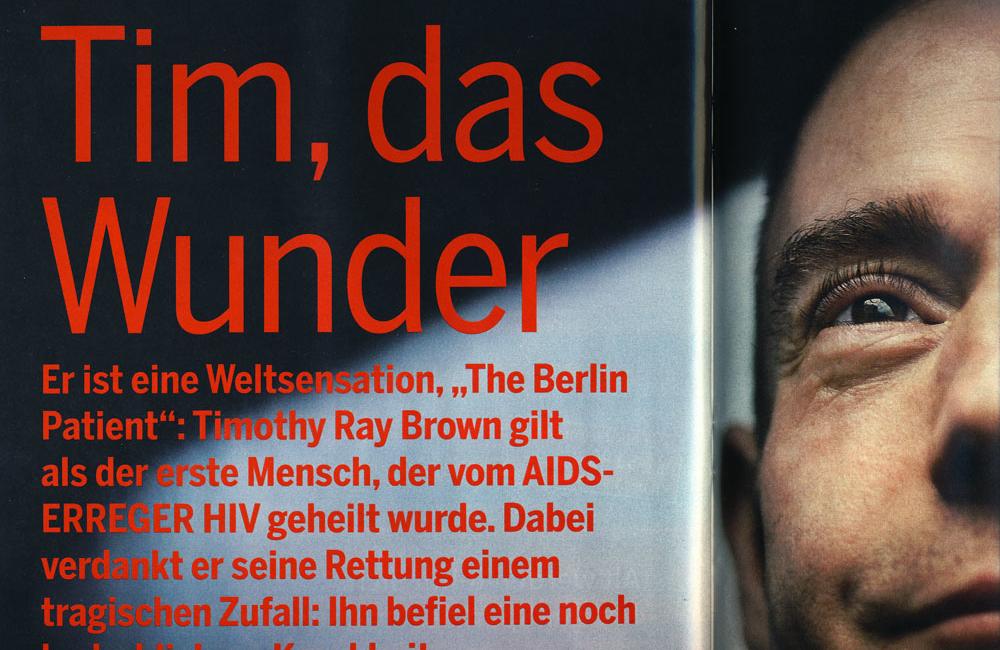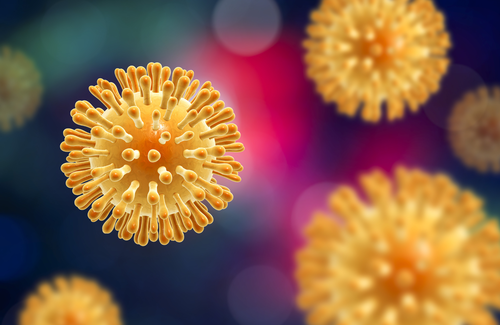
Doctors who carried out a stem cell transplant on an HIV-infected man with leukaemia in 2007 say they now believe the man to have been cured of HIV infection as a result of the treatment, which introduced stem cells which happened to be resistant to HIV infection.
The man received bone marrow from a donor who had natural resistance to HIV infection; this was due to a genetic profile which led to the CCR5 co-receptor being absent from his cells. The most common variety of HIV uses CCR5 as its ‘docking station’, attaching to it in order to enter and infect CD4 cells, and people with this mutation are almost completely protected against infection.
The case was first reported at the 2008 Conference on Retroviruses and Opportunistic Infections in Boston, and Berlin doctors subsequently published a detailed case history in the New England Journal of Medicine in February 2009.
They have now published a follow-up report in the journal Blood, arguing that based on the results of extensive tests, “It is reasonable to conclude that cure of HIV infection has been achieved in this patient.”
The case history
The 'Berlin patient' is an HIV-positive man who developed acute myeloid leukaemia, received successful treatment and subsequently experienced a relapse in 2007 that required a transplant of stem cells.
Doctors chose stem cells from an individual who had an unusual genetic profile: a mutation inherited from both parents that resulted in CD4 cells that lacked the CCR5 receptor. This mutation, called CCR5 delta 32 homozygosity, is present in less than 1% of Caucasians in northern and western Europe, and is associated with a reduced risk of becoming infected with HIV.
This is because all new infecting viruses need to use the CCR5 receptor on CD4 cells when infecting an immune system cell of the CD4 type.
Later in the course of HIV infection another type of virus emerges that can use the CXCR4 receptor instead.
Before the stem cell transplant the patient received chemotherapy treatment that destroyed most immune cells and total body irradiation, and also received immunosuppressive drugs to prevent rejection of the stem cells.
Antiretroviral therapy was halted on the day of the transplant, and the patient had to receive a second stem cell transplant 13 days after the first one, due to a further relapse of leukaemia.
The patient continued to receive immunosuppressive treatment to prevent rejection for 38 months, and at 5, 24 and 29 months post-transplant colon biopsies were taken to investigate possible graft-versus-host disease in the intestine. At each investigation additional samples were taken to check for signs of HIV infection in the abundant immune cells of the gut wall.
During the 38 month follow-up period the donor CD4 cells repopulated the mucosal immune system of the gut, to such an extent that the frequency of CD4 cells was almost twice as high as in HIV-negative healthy controls, and this phenomenon was also seen in a control group of ten HIV-negative individuals who received stem cell transfers.
The repopulation of CD4 cells was accompanied by the complete disappearance of host CD4 cells, and after two years the patient had the CD4 count of a healthy adult of the same age.
One of the challenges for any approach to curing HIV infection is long-lived immune system cells, which need to be cleared before a patient can be cured. In the case of the Berlin patient CCR5-bearing macrophages could not be detected after 38 months, suggesting that chemotherapy had destroyed these longer-lived cells, and that they had also been replaced by donor cells.
The German researchers and San Francisco-based immunologist Professor Jay Levy believe that the findings point to the importance of suppressing the production of CCR5-bearing cells, either through transplants or gene therapy.
The patient did not resume antiretroviral therapy after the transplant.
Nevertheless HIV remained undetectable by both viral load testing (RNA) and tests for viral DNA within cells, and HIV antibody levels declined to the point that the patient has no antibody reactivity to HIV core antibodies, and only very low levels of antibodies to the HIV envelope proteins.
Seventeen months after the transplant the patient developed a neurological condition, which required a brain biopsy and lumbar puncture to sample the cerebrospinal fluid for diagnostic purposes. HIV was also undetectable in the brain and the CSF.
An additional indication that HIV is not present lies in the fact that the patient’s CD4 cells are vulnerable to infection with virus that targets the CXCR4 receptor. If any virus with this preference was still present, the researchers argue, it would be able to swiftly infect the large population of memory CD4 cells that has emerged.
The Berlin patient speaks to the press
The `Berlin patient`, Timothy Ray Brown, a US citizen who lives in Berlin, was interviewed this week by German news magazine Stern.
His course of treatment for leukaemia was gruelling and lengthy. Brown suffered two relapses and underwent two stem cell transplants, as well as a serious neurological disorder that flared up when he seemed to be on the road to recovery.
The neurological problem led to temporary blindness and memory problems. Brown is still undergoing physiotherapy to help restore his coordination and gait, as well as speech therapy.
Friends have noticed a personality change too: he is much more blunt, possibly a disinhibition that is related to the neurological problems.
On being asked if it would have been better to live with HIV than to have beaten it in this way he says “Perhaps. Perhaps it would have been better, but I don’t ask those sorts of questions anymore.”
Timothy Brown is now considering a move from Berlin to Barcelona or San Francisco, and, reports Stern magazine, enjoying a drink and a cigarette.
Stern also interviewed Dr Gero Hütter, who was in charge of Timothy Brown’s treatment. Dr Hütter told Stern that as a scientist he was “in the right place, at the right time” and that “for me it is important to have overthrown the dogma that HIV can never be cured. Something like this is the greatest thing one can achieve in medical research”.
Implications for future approaches to curing HIV infection
If a cure has been achieved in this patient, it points the way towards attempts to develop a cure for HIV infection through genetically engineered stem cells.
The German researchers and San Francisco-based immunologist Professor Jay Levy believe that the findings point to the importance of suppressing the production of CCR5-bearing cells, either through transplants or gene therapy.
Scientists were sufficiently intrigued by the Berlin patient that they met in Berlin in 2009 to discuss how they could coordinate efforts to identify CCR5-delta32 homozygous donors and expand the supply of stem cells from these donors, for example through sampling blood cells from the umbilical cord of babies born to mothers who are homozygous for CCR5-delta32, in order to eventually facilitate stem-cell therapy.
Gene therapy techniques which can transform stem cells – and all their descendents – into cells resistant to HIV entry may be a more practical option than looking for matching donors.
Several US research groups announced in October 2009 that they had received funding to explore techniques for engineering and introducing CCR5-deficient stem cells.
If these approaches prove successful they will be expensive, so in the early stages it is likely that they would be reserved for people with no remaining treatment options or a cancer requiring bone marrow or stem cell transfer.
As Timothy Brown’s experience shows, curing HIV infection through ablative chemotherapy, immunosuppressive drugs and stem cell transfer is not a course of treatment for the faint-hearted. It has required courage, determination and a lot of support to become the first person to be pronounced `cured` of HIV infection.
Allers K et al. Evidence for the cure of HIV infection by CCR5Δ32/ Δ32 stem cell transplantation. Blood, advance online publication December 8, 2010.
Hutter G et al. Transplantation of selected or transgenic blood stem cells – a future treatment for HIV/AIDS. J Int AIDS Soc 12: 10, 2009.
Hutter G et al. Long-term control of HIV by CCR5 CCR5Δ32/ Δ32 stem-cell transplantation. N Engl J Med. 360: 692-8, 2009.
Thanks to Greta Hughson for translation.
New to NAM and aidsmap.com? Keep up with HIV news as it breaks by signing up to our free email bulletins or keep in touch with us on Facebook or Twitter.

